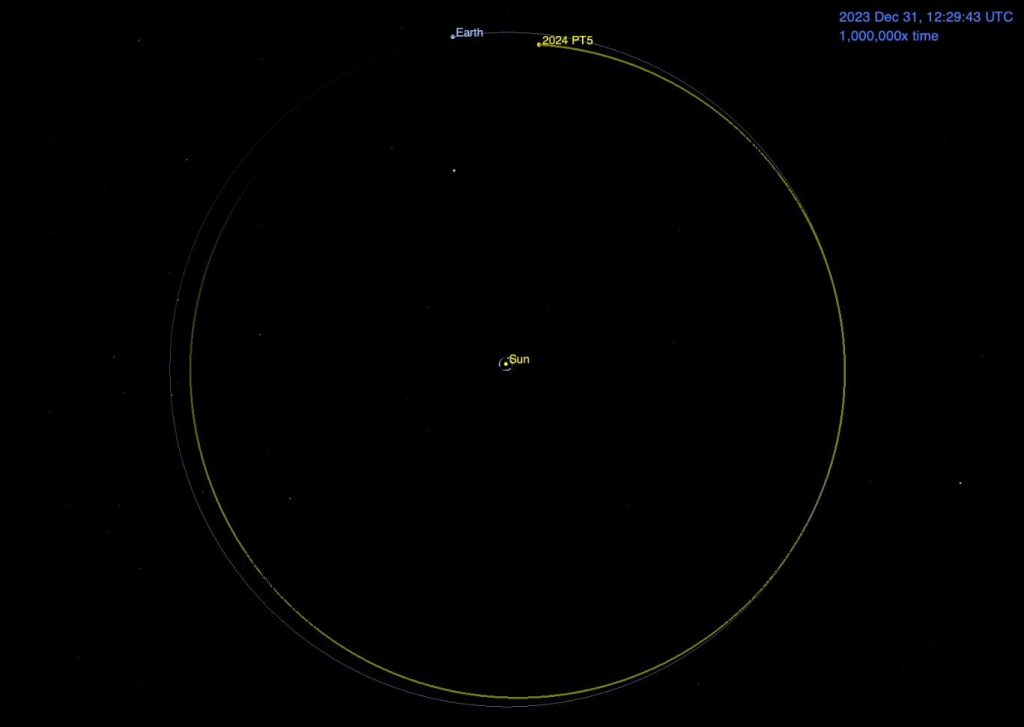
Understanding our world and the universe beyond requires a lot of observation to be combined with a lot of knowledge and amazing creativity.
Last year, a potentially hazardous object, cataloged as 2024 PT5, was discovered on an Earth-crossing orbit. While it didn’t remain above zero on the Torino Scale for very long, it certainly caught the eye of planetary scientists who were intrigued by its orbit that kept bringing it near Earth on lingering passes. Classified as a quasi-mini-moon, it has an appearance that twins our OG Moon in color. And color often, but not always reflects chemistry. Luckily, the data to look at chemistry was acquired by IRTF at Mauna Kea.
According to Teddy Kareta. “We had a general idea that this asteroid may have come from the Moon, but the smoking gun was when we found out that it was rich in silicate minerals — not the kind that are seen on asteroids but those that have been found in lunar rock samples.”
These results are published in Astrophysical Journal Letters with Kareta as lead author.
2024 PT5 is the second asteroid discovered to have a lunar composition. The other, 469219 Kamo’oalewa, is also a quasi-moon. It’s thought both these objects formed during a lunar impact. Large impacts can send debris – including small asteroid-sized chunks of rock – into space. Here on Earth, we have collected meteorites that originated from the moon, Mars, and various asteroids that were knocked into space on collision paths with us.
It’s interesting to think, there could even be bits of Earth out there from the impact that killed the dinosaurs.
And it’s good to know we are, for now, actively working to make sure we don’t go the way of the dinosaurs.
